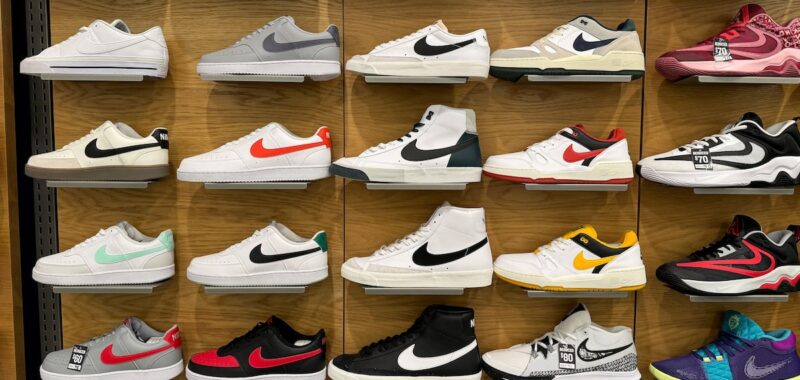
Nikeâs surprise announcement last month that Elliott Hill would return to lead the company touched off a wave of jubilation and relief among employees and investors alike, who saw in the 30-year veteran a chance to return the brand to its glory days.
Tuesdayâs financial results laid bare the extent of the task ahead of him.
The company recorded revenues of $11.6 billion in the quarter ended in August, down 10 percent from the same period the year before and just shy of the consensus Wall Street estimate. Net income also fell 28 percent, to $1.1 billion.
Hill, who retired from Nike in 2020, doesnât officially return to the sportswear giant until Oct. 14, and outgoing CEO John Donahoe, who has shouldered much of the blame for the companyâs recent string of dismal quarters, did not make an appearance on a call with investors and analysts tied to the quarterly results. Also Tuesday, Nike confirmed its investor day planned for November, the brandâs first in several years, would be postponed. It also withdrew its full-year guidance, choosing instead to provide quarterly guidance â another eight to 10 percent sales decline forecasted â to give Hill flexibility while he sculpts his turnaround plan.
It was abundantly clear in Tuesdayâs results that it will take more than a new CEO to fix Nike. The brand has deep-rooted problems which will require significant, company-wide change to resolve. Number one is the much-discussed innovation issue: Nike simply isnât releasing footwear â performance or casual â which is exciting consumers, and hasnât done so for a long time. Newer releases, including the Air Max DN and Pegasus 41, are not selling well, noted BMO analyst Simeon Siegel in a research note last week.
There will be no quick fix for this. Bernstein analysis last month forecast that Nikeâs innovation pipeline issues will exist until the first half of 2026, at the earliest. The brandâs stock fell more than 6 percent in aftermarket trading after Tuesdayâs earnings, erasing most of the gains seen since Hillâs appointment was announced.
âA comeback at this scale takes time. While there are some early wins, we are yet to turn a corner,â chief financial officer Matthew Friend told investors on Tuesdayâs earnings call. Friend said revenue was impacted by lower-than-anticipated unit sales overall and lower sales of oversupplied retro franchises that have carried the brand in recent years, such as the Jordan 1, Dunk and Air Force 1, which Nike is quietly removing from circulation.
Itâs not all doom and gloom. In recent months, Nike had begun to address some core issues.
Hillâs appointment itself was part of a wider initiative to restore Nike veterans across the companyâs management, scores of whom left around the time of Donahoeâs appointment in 2020.
Nicole Hubbard Graham, who left the brand in 2021 after 17 years, returned as chief marketing officer in January this year in a move that has already yielded a distinct tone shift in the brandâs messaging â another area in which the company had lost its touch. Tom Peddie, who retired in 2020, recently returned as vice president of marketplace partners to rebuild relationships with retailers. So too, did veteran sneaker designer Frank Cooker, who announced his comeback in September after leaving the Swoosh in 2018.
These moves have served to placate Nikeâs critics and brand partners alike, with many reassured the brand increasingly has the right people with the requisite institutional knowledge to transform its fortunes.
Hill is in a position akin to the one Adidas CEO Bjørn Gulden found himself in when he was parachuted to save the brand in crisis in January 2020 following the implosion of its Yeezy deal. Like Gulden with Adidas, Hill played no part in the last three years of Nikeâs downturn and is untainted by those associations.
Hill does have the benefit of being able to reset expectations at rock bottom, thereby taking off the pressure his predecessor faced from investors to enact an immediate turnaround. He wonât have the luxury of leaning into classic styles from the brandâs archive to revive interest from consumers as Gulden did. Under Donahoe, Nike was hampered by its over-reliance on retro basketball models like Jordan 1s and Air Force 1s.
Tuesdayâs bleak earnings and removal of its 2025 fiscal year guidance could work in Hillâs favour, buying him more time, analysts said.
â[Itâs] not necessarily a negative catalyst. With a new CEO coming, the pressure is off Q1 results,â Bernstein analysts said in a note to clients.

